Review: Samsung QN800B, 65-inches of 8K Neo QLED TV

We should all be grateful to ‘early adopters’. After all, if it wasn’t for those people who pounce on new technology and pay through the nose for it, the rest of us would never get to enjoy that same technology at a realistic price. But for every groundbreaking TV technology, such as 4K resolution, there’s a lame-duck alternative. Hands up anyone who thought 3D TV was a good idea? Exactly.
So what sort of technology is 8K television? After all, such ultra-ultra-high-definition content is thin on the ground – and that’s putting it mildly. So just how does Samsung expect to sell the idea of the QN800B 8K Neo QLED TV to early adopters? Because if it can’t, it’ll never sell the idea to the rest of us…
SAMSUNG QN800B: PRICE & AVAILABILITY
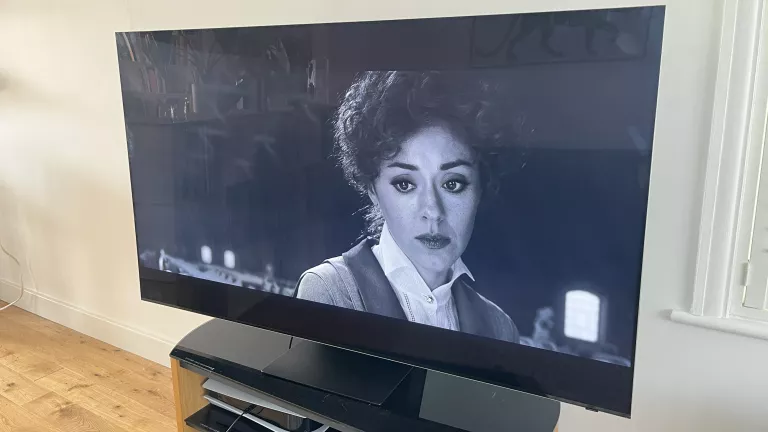
The 65-inch QN800B is on sale now, and in the United Kingdom it’s currently priced at £2699 – a chunk less than it cost when it launched a little under six months ago. There’s a 75-inch version available too that can be had for £3999, or an 85-inch monster that’s yours for a mere £4399. Over in America those prices are $2799 / $3499 / $4499, while in Australia the QN800B goes for AU$4499 / AU$6499 / AU$8999.
Compare these prices to the going rate for a 4K OLED, QD-OLED or Mini LED TV from any of Samsung’s most obvious rivals, and the QN800B – with its 8K resolution and Neo QLED (which is Samsung-speak for Mini LED) configuration – looks very aggressively priced indeed. That’s not to suggest it’s cheap enough to just buy on a whim, of course – so does it actually make any financial sense?
SAMSUNG QN800B REVIEW: WHAT’S NEW?
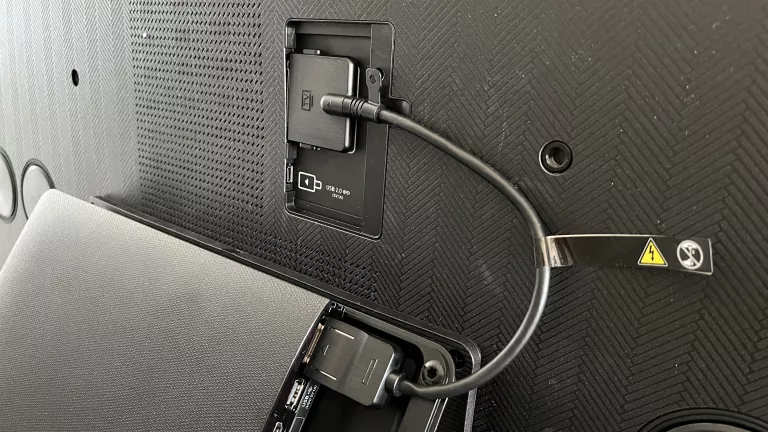
Well, first things first: the QN800B is an 8K television. This means a pixel count of over 33 million thanks to its 7680 x 4320 layout – compare this to the ‘mere’ eight-point-something-million pixels that a 4K TV’s 3840 x 2160 layout contains, and the advantages of an 8K resolution are obvious. Information is power, right? Having four times as much information on the screen should result in higher detail levels, superior sharpness… greater realism, basically.
As it stands, of course, those advantages are mostly theoretical. Native 8K content is currently harder to come by than an experienced Chancellor – but Samsung is bullish in its claims for the QN800B’s ability to upscale 4K content to fit its resolution to the point that it suggests it will look better on the QN800B than on a native 4K screen.
Samsung refers to this screen as a ‘Neo QLED’, but we know the truth: this is a Mini LED television, using numerous very small LEDs to backlight its LCD panel. Smaller LEDs mean many more LEDs, ultimately, which means more dimming zones, which means greater backlighting control. That’s the idea, anyway.
The Samsung has Bluetooth 5.2 and Wi-Fi wireless connectivity, and it keeps all of its physical inputs – including mains power – in an off-board module called One Connect. The advantages of this are obvious: requiring just one slender connection from the One Connect box to the screen makes for a very clean look, especially if the TV is wall-mounted. The stand has an integrated rest for the One Connect box, too.
Physical connections run to four HDMI inputs, three USB slots, an Ethernet socket, one RF and two satellite TV aerial posts and a digital optical output. One of the HDMI sockets features eARC compatibility, and all four are at 2.1 standard, which means 4K@120Hz, ALLM, VRR and AMD FreeSync Pro – and with a console running at 4K@60Hz, Samsung suggest input lag is less than 10ms. Gamers are further indulged by the ‘Game Bar’, a pop-up featuring information about refresh-rate, frame-rate and plenty more besides.
Just because we’ve become used to Samsung ignoring Dolby Vision HDR that doesn’t mean we in any way approve – and to be honest, the more expensive the Samsung TV the more wilful and pointless an omission it seems. HLG, HDR10 and Adaptive HDR10+ are all very welcome, but other brands manage to incorporate all worthwhile HDR standards into their screens without disaster befalling them.
And it’s particularly annoying given Samsung is perfectly happy to get on board with Dolby Atmos audio. The QN800B has a 4.2.2 speaker layout (with parts of it visible on the rear of the chassis) that’s intended to deliver a touch of the height and width inherent in Atmos soundtracks. There’s also Samsung’s Object Tracking Sound+ technology here, too – it attempts to steer sound output in sympathy with on-screen motion. And the QN800B is also compatible with the company’s ‘Q Symphony’ tech, which allows an appropriate Samsung soundbar to work in conjunction with, rather than instead of, the TV’s sound system.
As is usual with Samsung, the Smart TV interface here is courtesy of Tizen. And has lately been the case with Tizen, the screen layout is a bit big, a bit shouty and not quite as logical as it seems to think it is. Recommendations take an age to align with the sort of stuff you might have been watching, for example, and the way the interface covers almost the entire screen (with just a little ‘PIP’ box keeping you in touch with what you’re watching) is rather too assertive too. But it does at least home an absolute stack of catch-up and streaming service apps, and the inclusion of ‘Samsung TV Plus’ (a free selection of odd programmes and TikTok compilations, or so it would seem) is a nice touch.
It’s also Samsung business as usual where set-up is concerned – its set-up menus have long existed at the intersection between ‘extensive’ and ‘workable’, and the QN800B is no different. Yes, its picture performance can be significantly improved if you investigate all your options, but equally it can be rendered very watchable after just a few minutes.
SAMSUNG QN800B REVIEW: PERFORMANCE
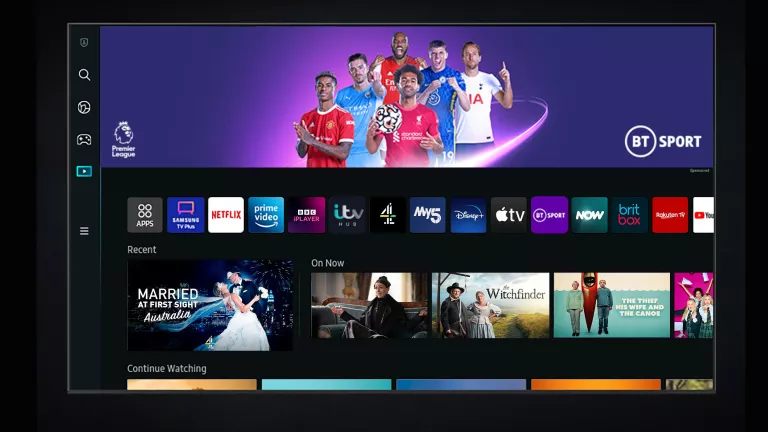
Among the 65QN800B’s many apps is YouTube – and it’s by far the most obvious and most easily accessed place to stream some 8K content. Admittedly it is all very much of the ‘demo’ variety, with lots of colourful birds or blooming flowers shot to make an 8K display look good – but there’s no denying its effectiveness. Native 8K content on the QN800B looks stunning in its detail levels, its colour fidelity, its definition and its general all-around realism. Of course, this is far from the most compelling content you’ve ever seen – and it’s when you step down to 4K stuff via Netflix, Disney+ or wherever that the QN800B is really put to the test.
Loading…
Most initially impressive is the level of brightness the Mini LED – sorry, Neo QLED – arrangement allows. White tones are clear, clean and detailed, with plenty of variation available even in what might have been considered quite uniform scenes – or, at least, they are once you’ve backed off the ‘brightness’ settings a little. Fresh from the box, the QN800B’s brightness could light a runway.
At the opposite end of the scale, black tones are deep and detailed, as impressively varied as the white stuff, and there’s far less crushing in predominantly black scenes than is often the case with LCD panels. Taken in conjunction with the white-tone performance, contrasts here are wide and quite dynamic – although it’s worth pointing out that the Samsung is prepared to lower its brightness when confronted with small bright details in an otherwise-dark scene. Presumably this is in an effort to avoid backlight haloing or blooming – it’s a minor trait, but once you’ve noticed it it’s impossible to unnotice. And backlighting itself is less than perfect, despite Mini LED’s numerous zones and better backlight targeting. The corners of the screen are mildly, but definitely, brighter than the centre.
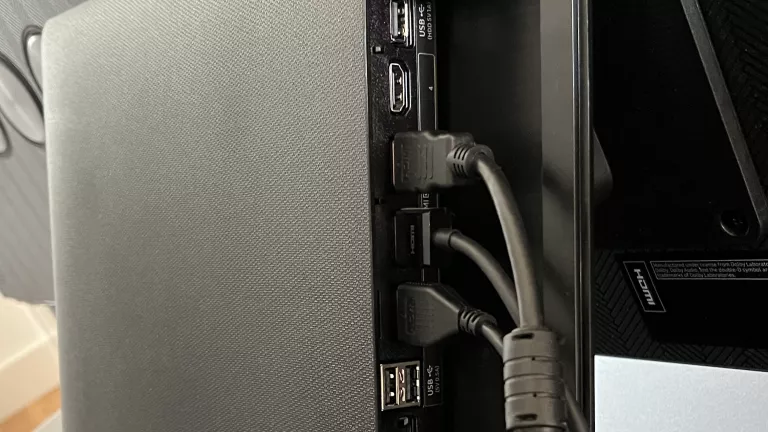
The colour balance available here is impressive, and the palette the Samsung draws from is wide-ranging and naturalistic. Motion control is good, too – it’s at its best with ‘LED Clear Motion’ switched on, although images can look just a little over-processed and soap-operay at the same time. Edge definition is similarly accomplished, and overall the QN800B does a fine job of upscaling 4K content to fit its 8K resolution – its overall image quality is on a par with the leading 4K TVs currently available.
But it’s when you step down from 4K to, say, 1080p that the QN800B starts to betray just how hard its Neo Quantum Processor 8K picture engine is working. Stream some content from BBC iPlayer or similar and it’s just too much of a stretch – the Samsung is having to turn just over 2M pixel’s-worth of information into an image of over 33M pixels, after all. Sub-4K images are soft and indistinct, smeary and hazy. It’s in these circumstances that ownership of an 8K display starts to seem something of an indulgence.
There’s no denying its potency as a next-gen games console monitor, though. Yes, ‘Game’ mode does coarsen the colour balance and brightness levels a little, but it keeps response time super-low and it allows the screen to showcase its abilities with motion control, edge-definition, contrasts and all the other stuff that contributes to an absorbing gaming experience.
SAMSUNG QN800B REVIEW: DESIGN & USABILITY
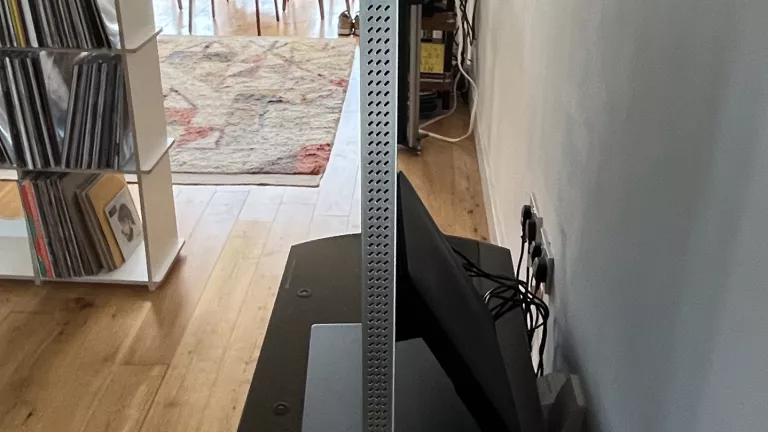
Thanks to the One Connect box, the 65QN800B is impressively slim when seen in profile – just a touch over 17mm, in fact. Compare that with the 40-to-50mm depth of the best OLED TVs these days, and the Samsung is a much more realistic proposition for wall-hanging than virtually any alternative. And the fact that you’ve only one cable to conceal when it’s up there only adds to the allure. As long as your wall can handle the 44.3kg weight, anyway.
Alternatively, the QN800B can be positioned on a substantial (11kg) central pedestal stand. It’s chunky, yes, but it means the surface on which your Samsung stands needn’t be all that wide. And the stand also incorporates a resting place for the One Connect box, which might prove useful.
Either way, the Samsung looks good from dead-ahead insomuch as it’s basically all screen. Its bezels are minimal, and its branding is discreet in the extreme.
And unless you’re the one who assembled it in the first place, there’s no issue to be taken with the build quality of the QN800B, either. If you took it from its packaging and attached its stand or bolted it to the wall, though, you’ll be aware of just how alarmingly the chassis flexes and how inexpensive some of the plastics involved in the construction feel.
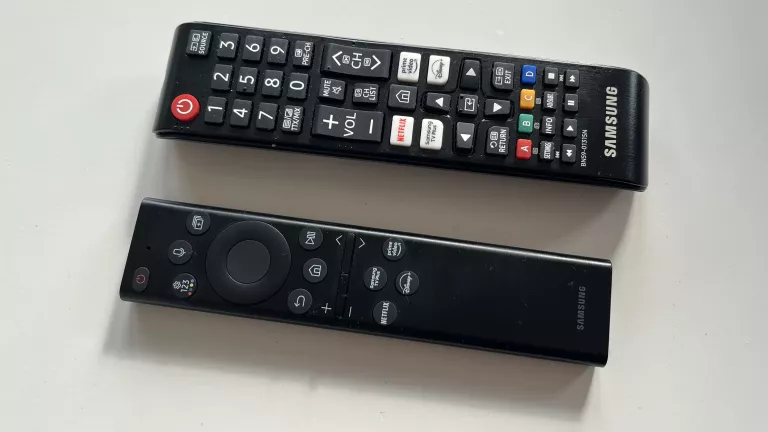
Control is available in a number of ways. There are two remote control handsets in the packaging, as is common these days – one is small, built from hard plastic and covers all functions by incorporating a load of very small, imprecise-feeling buttons. The other is altogether more elegant, features far fewer buttons covering just the headline controls, and is solar-powered. The second handset has a ‘mic’ button, which is useful for summoning your voice-assistant of choice – the QN800B is compatible with Alexa, Google Assistant and, erm, Bixby voice control.
Samsung’s ‘SmartThings’ app is also available and here, as in every implementation, it’s stable and clean. It’s logical and useful if you’re using it to control the TV alone, and it makes integrating the QN800B into your wider ‘SmartThings’ ecosystem simplicity itself.
SAMSUNG QN800B REVIEW: VERDICT

In some ways, the Samsung 65QN800B is the best TV this sort of money can buy. And when you tear yourself away from the 8K content you’ve managed to source and start viewing some 4K stuff, it remains fully competitive.
After that, though, the struggle to fill that enormous resolution proves just too great – so ultimately it’s all about you and the sort of content you want to watch. There’s certainly an argument for the future-proofing, though, so if you’re looking to buy into one set now and let it shine for years to come, Samsung does make a strong case…
ALSO CONSIDER
They’re ‘merely’ 4K TVs, but both LG’s 65OLEDC2 and Sony’s XR-65A95K are well worth consideration. The LG is less expensive than the Samsung, has deeply impressive 4K picture quality and is every bit as effective where gaming is concerned. The Sony, meanwhile, is a chunk more expensive, but its QD-OLED configuration might just be the way forward where overall 4K picture fidelity is concerned…




